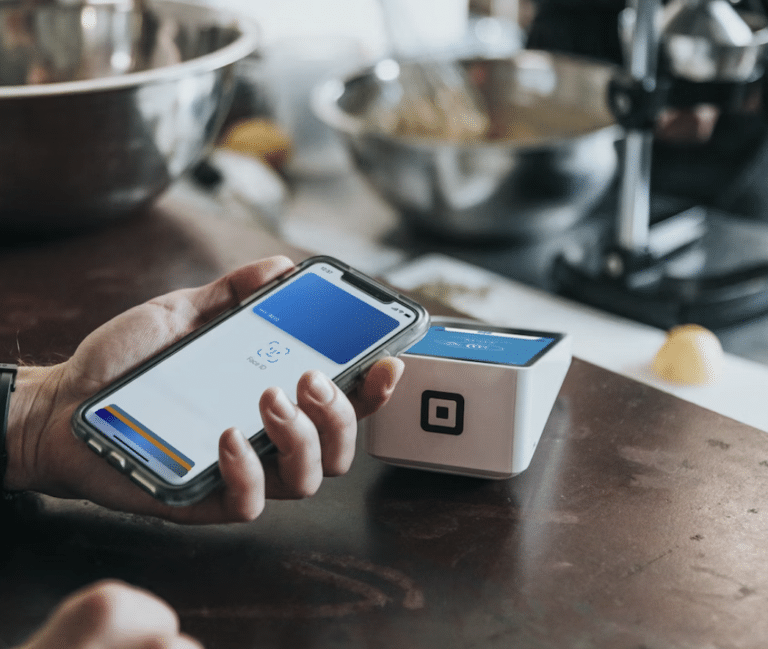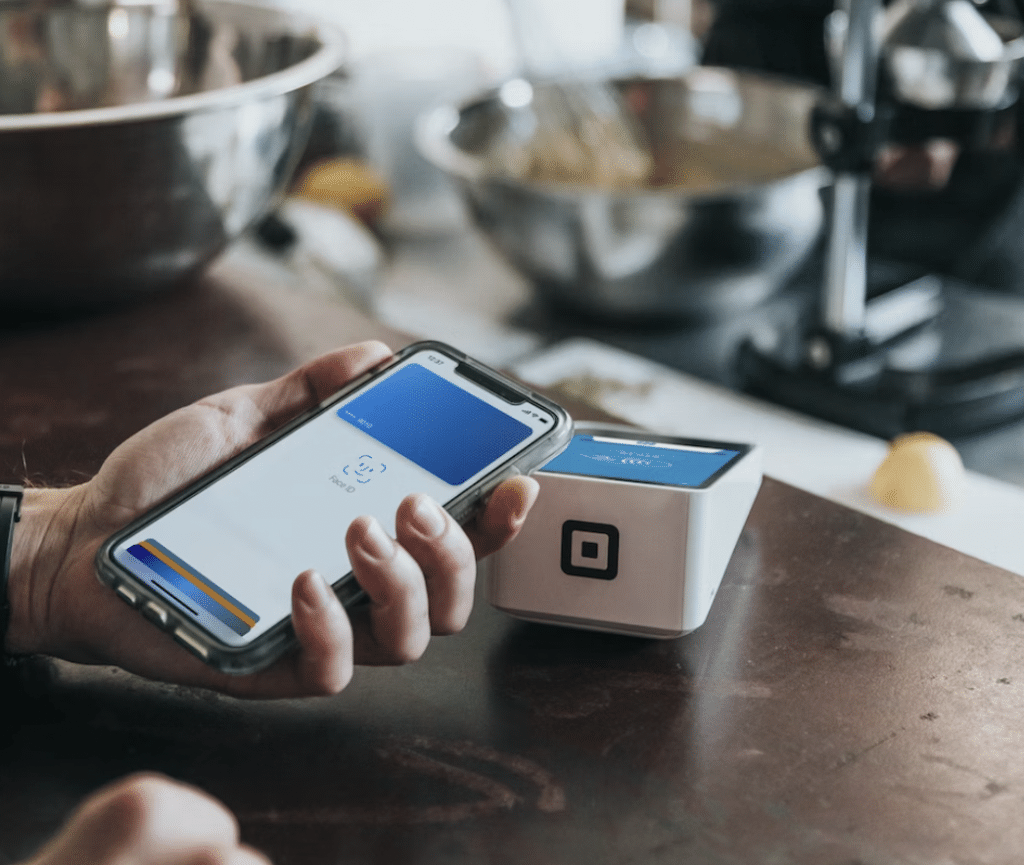On the surface, the difference between “card-present” transactions and “card-not-present” transactions may seem obvious—the card was either present when the payment was processed or it was not.
But the differences between card-present and card-not-present payments are a bit more complex.
The presence or absence of a physical card at the time of purchase has a significant impact on payment processing. Card-present and card-not-present transactions have different interchange rates, processing fees, and liability risks for merchants.
This in-depth guide contains everything you need to know about card-present and card-not-present transactions. We’ll walk through the definition of each, give examples of CP and CNP transactions, clarify the differences, and assess the costs. You’ll also get answers to some of the most commonly asked questions about card-present vs. card-not-present transactions.
What is a Card Present (CP) Transaction?
A card-present transaction occurs when the customer physically presents a payment card to a merchant at the point of sale (POS). Card-present transactions happen in-person or face-to-face at a typical brick-and-mortar business.
Swiping a credit or debit card, dipping an EMV chip card, and tapping a card or contactless payment through near-field communication (NFC) all count as card-present transactions.
Examples of Card Present Transactions:
- Tapping a chip-enabled credit card on a mobile card reader at a food truck.
- Swiping a credit card during checkout at the grocery store.
- Inserting a debit card into a POS system to purchase clothes at a retail shop.
- Using a smartphone’s mobile wallet tap-to-pay to buy a coffee.
There are some exceptions to the rule, where a card could be physically present but still count as a CNP transaction.
Let’s say a customer swipes their credit card on a traditional POS system at a brick-and-mortar retailer. But for some reason, there’s an error, and the card isn’t recognized. If the employee takes the credit card and manually enters the card number into the machine, it’s considered a card-not-present transaction—even though the card was technically present in person at the time of the sale.
What is a Card Not Present (CNP) Transaction?
Card-not-present transactions are processed remotely—typically when the cardholder and payment are not physically present at the time of the sale. Rather than the payment details being captured through an in-person card reader, they’re accepted online, over the phone, or through the mail.
Transactions processed through an online payment gateway or virtual terminal are considered to be card-not-present transactions.
Examples of Card Not Present Transactions:
- Card-on-file payments, such as a recurring subscription to Netflix or Spotify.
- Buying something from an ecommerce website using a credit or debit card.
- Ordering a pizza for delivery and providing the credit card number over the phone.
- Sending a digital invoice to a customer that will be paid online.
Similar to a physical credit card, there are instances where a digital wallet could be considered a card-present or a card-not-present transaction.
For example, we previously covered a scenario where a customer purchases a coffee using a digital wallet on their smartphone as a card-present transaction. But if they use that exact same digital wallet to buy something online through a mobile commerce website, it’s considered a card-not-present transaction.
What’s the Difference Between Card Present and Card Not Present Transactions?
To help you further understand CP and CNP payments, we’ll take a closer look at the key differences between card-present and card-not-present transactions.
- Physical Presence — If the credit card, debit card, or digital wallet and the cardholder are physically present at the time of the transaction, then it’s typically a card-present transaction. If the cardholder and payment method are not present, then it’s a card-not-present transaction.
- Transaction Environment — Beyond physical presence, the transaction environment itself also plays a significant role. For example, a customer could technically be physically present when they’re signing up for a subscription-based food delivery service from a local vendor. But if the payment details are entered into a virtual terminal and stored on-file for recurring payments, then the transaction environment is actually remote—which means it’s a CNP transaction.
- Interchange Rates — Card-not-present transactions have higher interchange rates. These are set at the card network level by Visa, Mastercard, Discover, and American Express.
- Processing Fees — In addition to higher interchange rates, payment processors also charge higher processing fees for card-not-present transactions. For example, Square charges 2.6% + $0.10 per transaction for card-present transactions, 2.9% + $0.30 per transaction for online payments, and 3.5% + $0.30 for card-on-file transactions.
- Chargeback Liability — Card-not-present transactions are perceived to be riskier than card-present transactions. So they have a higher chargeback liability. If a card-not-present transaction is disputed by a cardholder, there’s a greater chance the dispute gets upheld compared to an in-person transaction where the card was present and the customer signed the receipt.
I know what some of you are thinking. Why are these differences important? Why should you care?
At the end of the day, it all comes down to cost. If you don’t understand the differences between card-present and card-not-present transactions, then you’ll likely end up overpaying to process credit and debit cards.
Card Present vs. Card Not Present Rates
Card networks and credit card processors both charge higher rates for card-not-present transactions compared to card-present transactions.
At the card network level, the average card-present transaction interchange rate falls between 1.70% to 2.05%. For card-not-present transactions, the average rate increases to 2.25% to 2.65%.
There are additional fees to consider too. For example, Visa is implementing a new Digital Commerce Service fee. As of October 2023, there will be an additional 0.0075% assessed on card-not-present transactions.
Mastercard is also adding new network fees in October 2023 for pre-authorization on both card-present and card-not-present transactions. But the card-present fee is lower at 0.0075% compared to the card-not-present pre-authorization fee of 0.0125%.
It’s not just the card networks—it’s credit card processors too. We already mentioned that Square’s card-present fees start at 2.6% + $0.10, but card-not-present can go up to 3.5% + $0.30.
Stripe also charges higher processing fees for CNP transactions. Cards processed through Stripe’s in-person terminal start at 2.7% + $0.05 per transaction. But online cards start at 2.9% + $0.30 per transaction, and manually entered cards cost 3.4% + $0.30 per transaction.
Why Are Card Not Present Transactions More Expensive?
We’ve already established that card-not-present transactions are more expensive than card-present transactions. But why?
The short answer—risk and liability.
It’s riskier for card networks and processors to process card-not-present transactions because there’s a higher risk of fraud and chargeback liability.
Let’s say a customer pays for something in-person using a debit card. They insert or tap the card into a POS terminal. Then they enter their PIN number and sign the receipt. This is considered to be a low-risk transaction.
But fraudsters can steal card data and enter payment details into an ecommerce website, even if they don’t physically have access to the card. This poses a risk for the card networks, issuing banks, and processors, who have to move money more than once and issue refunds to cover the fraudulent charges. Due to the added costs and perceived liability, these transactions are more expensive for everyone involved—so they pass those added fees to merchants for processing riskier transactions.
Is a Digital Wallet Considered Card Not Present?
A digital wallet is considered card-not-present only if it’s used to purchase something remotely. If a digital wallet is used to buy something from an ecommerce website or sign up for a recurring subscription online, then it’s card-not-present. But if a digital wallet is used to buy something in-person at a contactless payment terminal, then it’s a card-present transaction.
Is Apple Pay Considered Card Not Present?
Apple Pay is only considered card-not-present for remote purchases—like transitions through an ecommerce website or online marketplace. If a customer clicks a “buy” button through a social media site to buy an item using Apple Pay, then it’s a card-not-present transaction. But if they physically present their iPhone or Apple Watch in person at a POS system, then it counts as a card-present transaction.
Final Thoughts and How to Save Money on CNP Transactions
Depending on your business type, there’s likely not much you can do to change whether you’re accepting card-present or card-not-present transactions. An online retailer can’t make customers come swipe their cards in person. Subscription services need to keep cardholder payment information on file. That’s just how these businesses work.
However, there are certain situations where you can try to avoid paying card-not-present rates. First, always avoid manually entering payment details into your credit card terminal for in-person transactions. Even though the card and cardholder are both physically present, this will count as a CNP transaction.
If you’re offering a pick-up or delivery service, you should wait to collect the payment until you’re face-to-face with the customer. Restaurants can accept payments when the customer arrives to pick up their order, as opposed to taking their credit card details over the phone. If you offer delivery, you could give your drivers a mobile card reader to accept payment at the time of the delivery as opposed to the time of the order.
But for those of you who don’t fall into these unique circumstances, you’ll need to look for other ways to reduce the costs of card-not-present transactions.
Did you know that the rates you’re currently paying are negotiable? This means you can lower your credit card processing fees without having to change processors.
Contact our team here at Merchant Cost Consulting for a free audit and analysis to find out how much you can save today.
We recently helped an ecommerce retailer save $275,000 in processing fees in just one year—lowering their total costs from 3.95% to 2.51%. Read more here.



